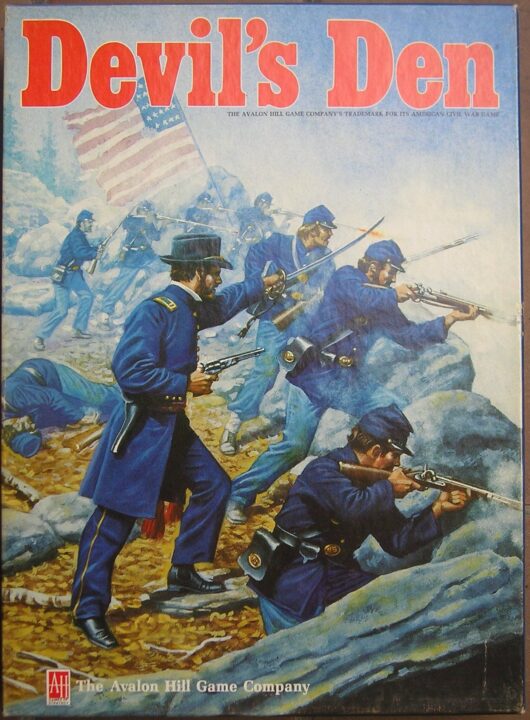Welcome to my review of Devil’s Den, a board game that’s caused more friendly arguments in my living room than who gets the last slice of pizza. This one’s got some gutsy balance, a dash of luck, and a theme so spooky my buddy Dave insisted on playing with the lights on. Grab your snacks and maybe a notepad—I’ve put this game through its paces with my usual gang and have some truths to share before you go spending your hard-earned cash.
How It Plays
Setting up
First, lay out the haunted mansion board in the middle of the table, making sure no one sits too close to the ghost tokens (they get clingy). Each player picks a character, grabs matching pieces, and takes a cursed item card. Shuffle the event deck, place devil counters on the marked rooms, and hand everyone their starting coins (for bribes and bad decisions).
Gameplay
Players move around the mansion, avoid traps, and try to snatch relics quicker than a cat in a tuna factory. You roll dice to move, draw event cards when you land in spooky spots, and might have to negotiate with rivals or face surprise hauntings. The devil’s minions (NPCs) mess with your plans and, of course, someone will knock over the board at least once a night.
Winning the game
To win, you need to collect the most relic points by grabbing treasures and escaping the mansion before dawn. If you’re left behind when the sun rises, tough luck—your character joins the ghost decor. The player who escapes with the highest relic total gets eternal bragging rights (and maybe a new fear of attics).
Want to know more? Read our extensive strategy guide for Devil’s Den.
The Balancing Act: Is Devil’s Den Fair for Everyone?
Now, I’ve played board games that felt like riding a bike with a flat tire—no matter what you do, you always wobble and curse your luck. But devil’s den surprised me in this area (not the cursing, that still happens). Game balance and fairness actually matter here, and the designers at least tried to keep everyone’s fate in their own hands.
The main thing I appreciated is that devil’s den uses asymmetric roles. One person plays as the desperate defenders, while the other controls the relentless attackers. On paper, this sounds about as fair as me arm wrestling a bear. But after three games, my group noticed that the rules have some clever catches: defenders get sneakier movements, attackers have more brute force, and both sides must constantly adapt. No one side steamrolls the other, unless you spend all your resources building a moat full of angry squirrels (sadly, not an option—yet).
That said, every system has its quirks, and devil’s den is not perfect. In our second play, we spotted a “winning strategy” for the defenders, which turned the last round into a slow crawl. If you get a rules lawyer in your group, expect some arguments. There are some small balance tweaks in the rulebook—like extra reinforcements for the attackers—that hint the designers ran into the same problems. It’s not a game breaker, but it stopped me from giving this one a gold star for fairness.
Next up, I’ll tell you if devil’s den is a brain-burner or a dice-rolling fiesta, so stay tuned—bring your lucky socks just in case.
Luck or Skill? The Eternal Struggle in Devil’s Den
Let me set the scene: it’s late Saturday. My friends and I gather around the table, only half of us can actually fit in the chairs because Devil’s Den needs more space than my first apartment. We divvy up the character pieces, and someone always grabs the sneaky demon. Within minutes, curses and dice are flying. Why? Well, Devil’s Den walks straight into the classic board game argument—does skill or luck decide the winner?
Here’s how it shakes out. The game leans on dice rolling, which brings a big chunk of luck to every round. I once lost three turns in a row because of unlucky rolls—and trust me, it wasn’t for lack of skill (I’m practically an expert at blaming the dice). That said, skills like bluffing, reading your opponents, and managing your resources still matter. The real fun comes when you use a clever card combo or outwit your friends and watch them groan in defeat. But no matter how shrewd your moves, a bad dice streak can knock you back to demon kindergarten.
If you’re a player who starts sweating the moment dice come out, Devil’s Den might push your buttons. The luck factor doesn’t ruin the game by any means, but don’t expect it to reward the best strategist every time. That’s like expecting my dog to fetch my slippers—possible, but you’re taking a gamble.
Now, get ready to find out if Devil’s Den keeps calling you back for another ride or if it collects dust faster than my gym membership card—replay value is coming up next!
Devil’s Den: A Battle Worth Replaying?
Okay, so here’s the thing about Devil’s Den—it’s got this magnetic pull that makes you want to set up the board all over again, even after you’ve been completely outwitted (or out-lucked, but we’re not talking about that today). My group played it five times in one weekend, which is about four more times than we played “Guess the Smell” (a game I will never review, for obvious reasons).
One of the key reasons Devil’s Den manages to stay fresh is the variety of ways you can approach each match. You can try sneaky tactics, go full-on aggressive, or just annoy your friends until they chase you down first. The board layout changes up enough to prevent that same-old, same-old feeling. Plus, once someone wins, you can bet your bottom dollar everyone else immediately demands a rematch to “prove a point.” (Spoiler: nobody ever proves a point.)
Engagement wise, Devil’s Den keeps everyone on their toes. There’s not much downtime, so you won’t find yourself scrolling your phone between turns—unless it’s to Google “how to actually win Devil’s Den.” Decisions come thick and fast, and player interaction is a big part of the game. If someone zones out, trust me, they miss out in a big way. That sense of “anything can still happen” keeps folks leaning forward in their chairs and occasionally shouting things my neighbors do not appreciate.
Next up, let’s talk about how Devil’s Den looks and feels on the table, from its gnarly components to how much it immerses you in the demon-bashing fun!
Devilish Details: Components & Theme Immersion in Devil’s Den
Let me tell you, when I first cracked open the box of Devil’s Den, I expected to be greeted by flimsy plastic pieces and a board as thin as a slice of cheese. To my surprise and delight, the components are actually solid! The tokens feel beefy in your hand, and the cards can take a light snack spill or two (trust me, my friend Gary proved this the hard way with his salsa disaster).
The game board itself? It’s a stunner. The art pulls you right into that whole “sinister fortress” vibe. I’ve caught people just admiring the fiery detail instead of making their move. Sure, the little plastic fortifications aren’t going to make you believe you’re defending your soul from eternal doom, but they do the job. You can tell the designers had fun with the atmosphere—there are flames, shadows, and lurking evil everywhere you look.
Theme-wise, Devil’s Den gets high marks from me. Every turn feels like you’re scrambling to outsmart the devil—or, if you’re like my buddy Jen, rooting for chaos because you like watching the world burn. The rules and mechanics do a decent job matching the theme, so it never feels like just moving pieces on a board. You feel the pressure and the temptation, and a bit of glee when you outwit your friends.
So, do I recommend Devil’s Den if you want some atmosphere with your cardboard cutthroatery? Absolutely—just keep the salsa away from the cards.
Conclusion
Alright, that wraps up my review of Devil’s Den! This game packs a spooky punch and is great when you want a mix of laughs and screams at the table. I had a blast running through haunted halls and dodging traps with my friends, even if the dice sometimes had it out for me. The theme is strong, the components are solid, and there’s tons of replay value. But, heads up—if you like games decided by pure skill, the luck factor here might make you want to howl at the moon for a while. Still, for fans of thematic chaos and unpredictable fun, Devil’s Den is a creepy crowd-pleaser I can recommend (as long as you don’t flip the board when the dice betray you). Thanks for reading, and happy haunting!


